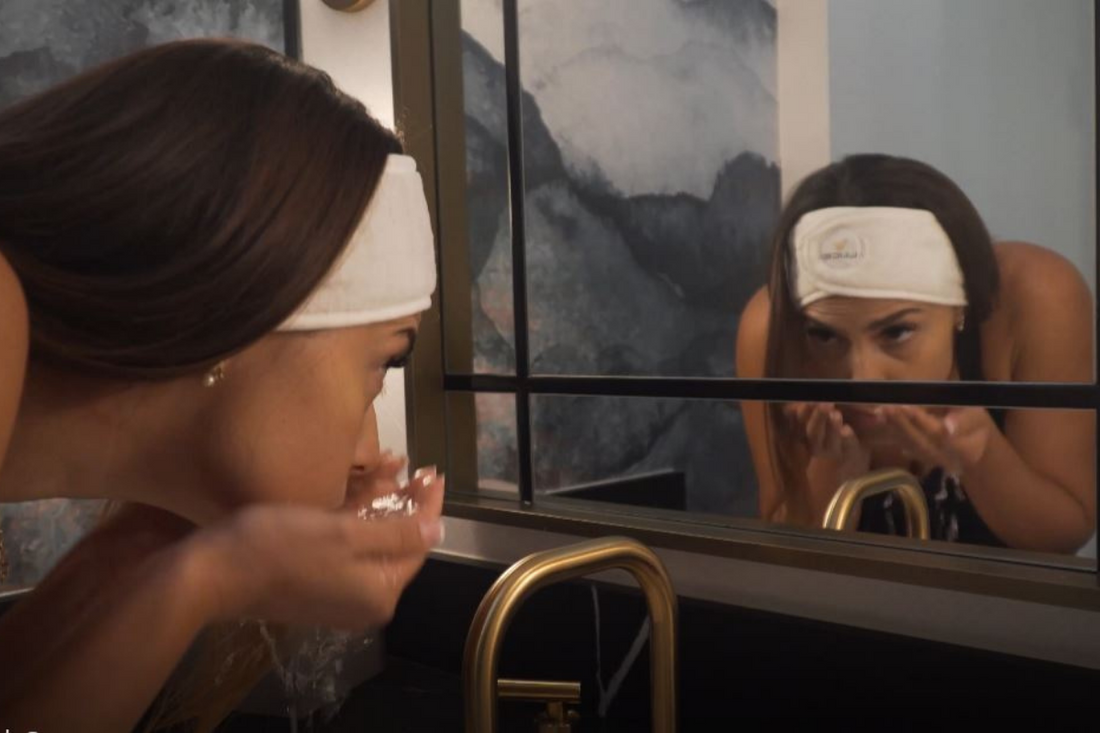How to Wash Your Face Properly: A Step-by-Step Guide to Cleansing

If you’ve forgotten how to wash your face properly, not to worry. This step-by-step guide will tell you everything you need to know.
Remember: spending money on fancy anti-aging serums and creams serves no purpose if you’re applying them on a dirty canvas.
Proper cleansing is needed to eliminate irritants, pollutants, and makeup, as well as prepare the skin for maximum absorption of potent (expensive!) treatments.
Below, you’ll find eight FAQ’s that cover everything you’d ever want to know about washing your face the correct way.
1. How often should you wash your face?
Cleanse in the morning and evening, as well as after heavy sweating—an absolute must if you want to prevent acne.
For the morning cleanse, you can opt to wash your face with just water if you choose. However, a mere splash is not best practice for skincare.
If you have acne-prone or oily skin and tend to over-wash, be mindful that—counterintuitive as it may seem—frequent washing strips the skin of the oil required to maintain a healthy PH.
2. Is it better to wash your face with your hands or a brush?
It depends. Tools like the LUCE180 or the LUCE Dermal Definer definitely offer deeper exfoliation and a deeper level of cleansing than your fingers alone.
If you must use a washcloth, opt for a baby washcloth or muslin cloth, but be gentle. Damp cloths are a bacterial breeding ground, so ensure you use a fresh one every time.
3. Should you wash your face in the shower?
By all means, yes! The truth is—it doesn’t actually matter whether you wash your face in the shower or outside of it—as long as you’re doing it twice a day.
Just keep in mind that hot water can dehydrate the skin, so if you tend to take super long showers, that’s something to be aware of.
Should you decide to wash your face in the shower, here’s how to do it: treat your face to the hairline, under ears to neck, and décolleté. Once the face is clean, move to the neck. Once the neck is clean, move to the décolleté.
4. Should you use a cleanser or a face wash first?
In the “double cleanse” method, you can consider step 1 to be the cleanser, and step 2 to be the face wash.
Cleanser is used first to remove makeup, dirt, and oil; face wash second for a deeper clean that is washing your face with soap (only gentler.)
5. How to Wash Your Face Properly
1. Keep your hair out of your face.
Pull your hair back into a ponytail, or use the spa headband from the LUCE Lazy Eraser set.
2. Wash your hands.
While that might sound obvious to some, it’s arguably one of the most crucial steps in the face-washing process. You do not want the germs from the subway ride home mixing with your cleanser, then transferring them to your face.
3. Start your “double cleanse” removing makeup with a soft cloth and water.
4. Next, use a water-based cleanser and a facial brush.
5. Pat dry or air dry.
Use a clean towel to pat dry. Rubbing and wiping tug at the skin, which will damage elastin over time.
Acne prone or dry skin may benefit from air drying. While skin is damp, proceed to the next step of your regimen to maximize absorption of potent ingredients.
6. How long should you wash your face for?
The entire process—including facial massage—should last between 30-60 seconds, and not longer than 90 seconds. (Cleansing for under 30 seconds is unlikely to give the cleanser an opportunity to work.)
Note that cleansers are formulated to be on the skin for a maximum of 2 minutes. Unless directions explicitly state a cleanser may be used as a mask, leaving it on for longer than the designated period isn’t recommended.
7. What’s the best facial cleanser?
Given the brief time cleanser is in contact with the skin, spending a lot of money on a pricey cleanser is quite literally washing money down the drain.
The ideal cleanser is gentle, non-foaming (more on this below), non-abrasive, and free of alcohol, fragrance, soap, parabens, sulfates; particularly harsh sulfates are sodium laureth and sodium lauryl. If you see those ingredients on the back of a product, choose something else.
While foaming cleansers might give your skin a squeaky clean feeling, the reality is that most are too harsh. If your skin feels tight or aggravated (red) after washing with a foaming cleanser, then experiment with a gel or cream to see the difference.
